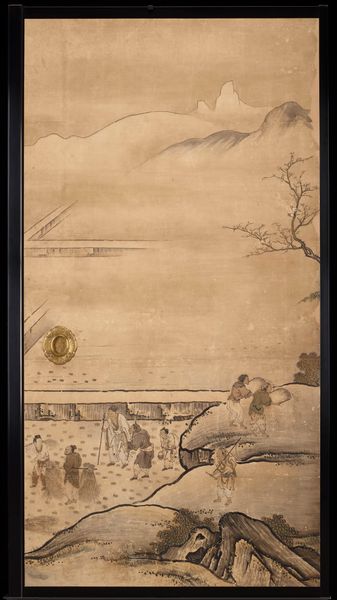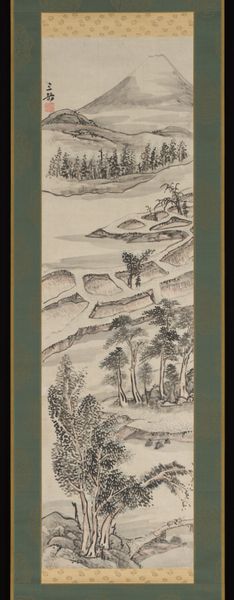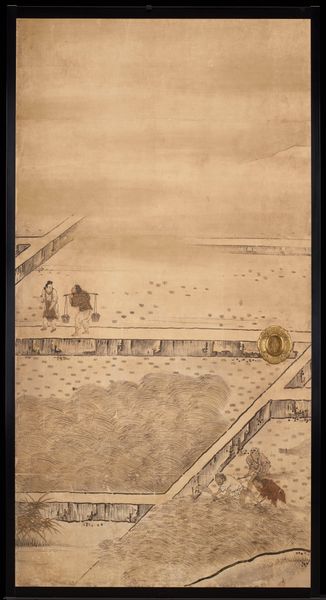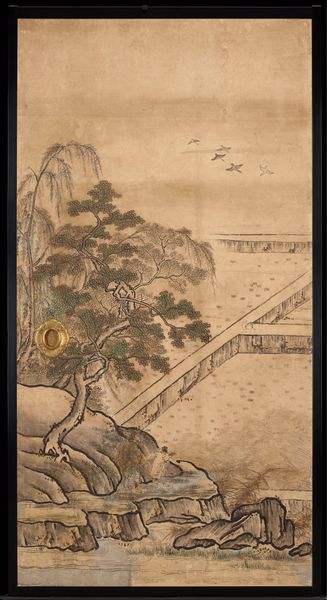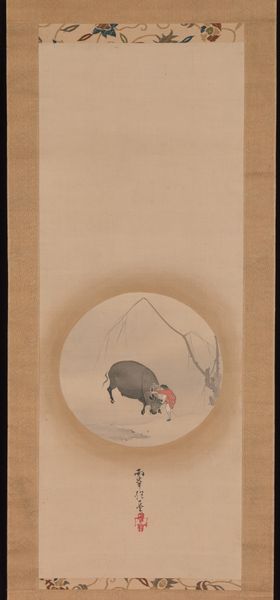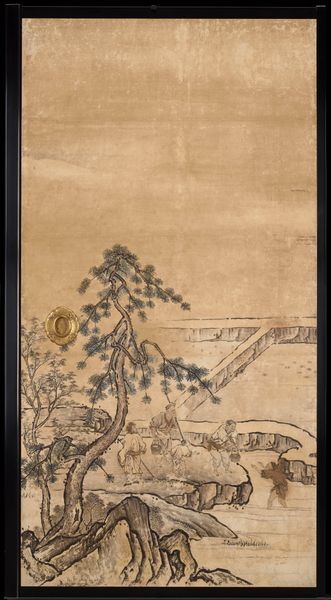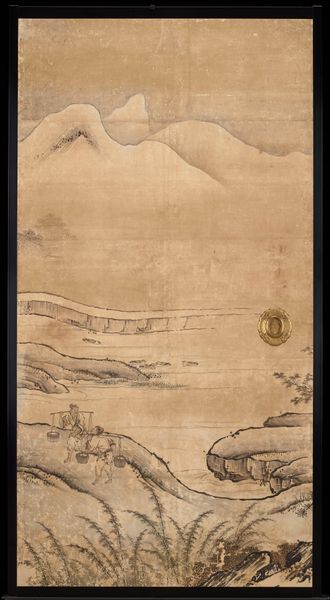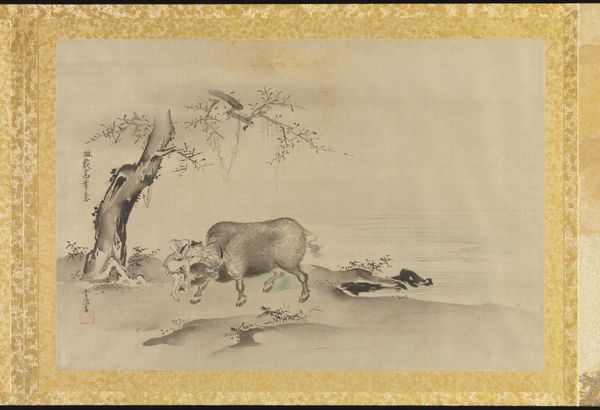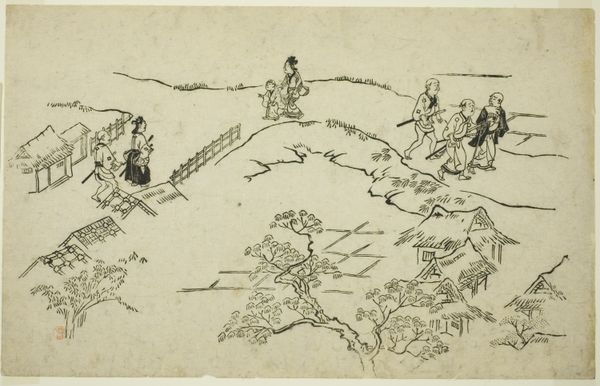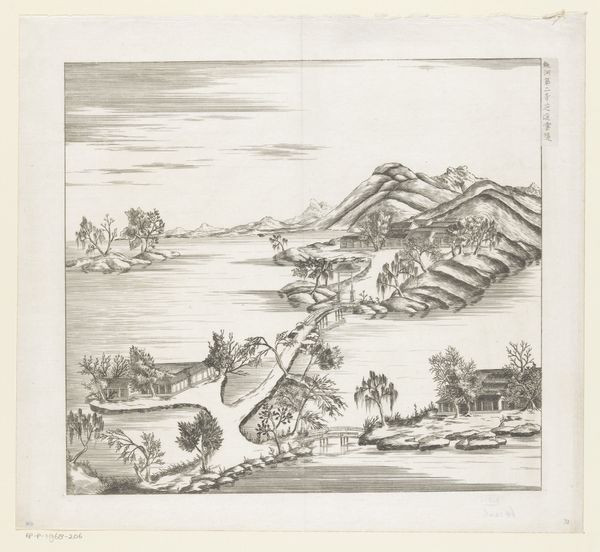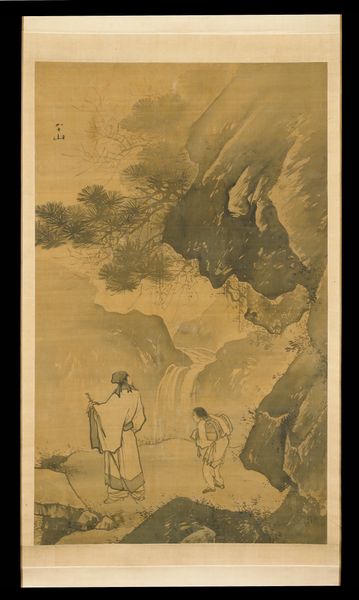![Winter [right from the set Rice Farming in the Four Seasons] by Kano Sanraku](/_next/image?url=https%3A%2F%2Fd2w8kbdekdi1gv.cloudfront.net%2FeyJidWNrZXQiOiAiYXJ0ZXJhLWltYWdlcy1idWNrZXQiLCAia2V5IjogImFydHdvcmtzLzA2ZTY2ZmVkLWM3YjEtNGUxNi05MTdhLTIyNDVkNDgzZDIyOS8wNmU2NmZlZC1jN2IxLTRlMTYtOTE3YS0yMjQ1ZDQ4M2QyMjlfZnVsbC5qcGciLCAiZWRpdHMiOiB7InJlc2l6ZSI6IHsid2lkdGgiOiAxOTIwLCAiaGVpZ2h0IjogMTkyMCwgImZpdCI6ICJpbnNpZGUifX19&w=3840&q=75)
Winter [right from the set Rice Farming in the Four Seasons] c. 1620s
0:00
0:00
painting, ink
#
ink painting
#
painting
#
asian-art
#
landscape
#
ukiyo-e
#
japan
#
ink
#
genre-painting
#
history-painting
Dimensions: 76 x 39 1/4 x 4 in. (193.04 x 99.7 x 10.16 cm)
Copyright: Public Domain
Kano Sanraku painted "Winter [right from the set Rice Farming in the Four Seasons]" with ink and color on paper during a time of significant social and economic change in Japan. Here we see farmers rendered with great sensitivity, and the work speaks to the central role of agriculture and the realities of rural life, but the scenes are idealized, softening the edges of what was often a very hard life. Gender roles are subtly present; the men depicted plowing the fields and carrying heavy loads, while women may have been responsible for other tasks, such as planting. These depictions in art served to reinforce social structures and gendered expectations. It invites us to reflect on the labor, traditions, and societal structures that underpin the cultivation of rice, a staple crop deeply intertwined with Japanese identity and history.
Comments
minneapolisinstituteofart almost 2 years ago
⋮
These sliding door panels originally formed the four walls of a small reception chamber at Daikakuji, a Buddhist temple in northwest Kyoto that also served as the palace for Japan’s emperor. The panels form a continuous panorama from wall to wall and present various activities associated with rice cultivation: plowing, transplanting the rice, irrigating, threshing, and grinding. The didactic theme is derived from Chinese painting; agriculture, according to Confucian teachings, is the basis of a well-ordered society. Accordingly, when Japanese rulers adopted Confucianism as their ruling ideology, they also commissioned paintings that reflected social stability, morality, and government values. Although unsigned, these paintings were likely produced by Kano Sanraku. As head of the Kyoto branch of the influential Kano school, Sanraku counted several prominent aristocratic families and Buddhist monasteries, including Daikakuji, as key patrons.
Join the conversation
Join millions of artists and users on Artera today and experience the ultimate creative platform.
